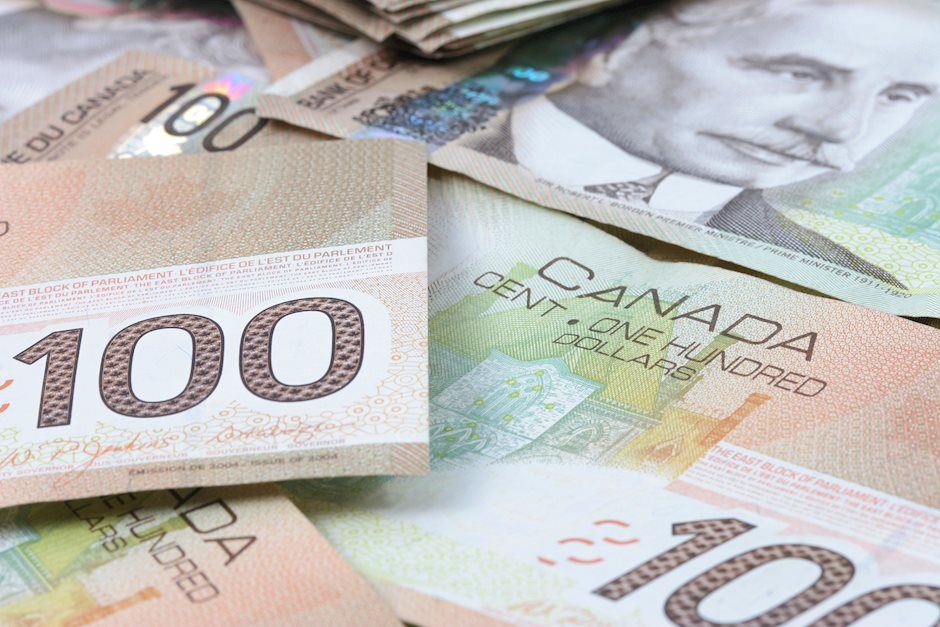USD/CAD flat lines around 1.3725-1.3730 area, below multi-week top touched on Friday
- USD/CAD reverses an early dip to 1.3700, though the upside potential seems limited.
- The US political uncertainty and dovish Fed bets keep the USD bulls on the defensive.
- An uptick in Oil prices underpins the Loonie and contributes to capping for the major.

The USD/CAD pair attracts some dip-buying following an Asian session uptick to the 1.3700 neighborhood, albeit lacks follow-through and remains below a nearly three-week low touched on Friday. Spot prices currently trade around the 1.3725-1.3730 region – unchanged for the day – and the directionless intraday price move is sponsored by a combination of diverging forces.
The initial market reaction to US President Joe Biden's exit from the presidential race turned out to be short-lived, which is evident from a modest US Dollar (USD) bounce. This turns out to be a key factor acting as a tailwind for the USD/CAD pair. That said, dovish Federal Reserve (Fed) expectations hold back traders from placing aggressive bullish bets around the Greenback and cap the upside for the currency pair.
Investors now seem convinced that the US central bank will lower borrowing costs in September and have been pricing in two more rate cuts by year-end, which is anticipated to boost economic activity and fuel demand. This assists Crude Oil prices in reversing a part of Friday's heavy losses to a one-month low, underpinning the commodity-linked Loonie and contributing to keeping a lid on the USD/CAD pair.
Meanwhile, concerns about an economic slowdown in China – the world's top oil importer – should act as a headwind for Crude Oil prices. Traders also seem reluctant and prefer to wait for more cues about the Fed's policy path before placing directional bets around the USD/CAD pair. Hence, the market focus will remain glued to the US Personal Consumption Expenditures (PCE) Price Index data, due for release on Friday.
Market participants this week will also confront the release of flash PMIs, which should provide fresh insight into the health of the global economy and influence Crude Oil prices. In the meantime, the broader risk sentiment might continue to drive the USD and produce short-term trading opportunities around the USD/CAD pair in the absence of any relevant market-moving macro data, either from the US or Canada.
Canadian Dollar FAQs
The key factors driving the Canadian Dollar (CAD) are the level of interest rates set by the Bank of Canada (BoC), the price of Oil, Canada’s largest export, the health of its economy, inflation and the Trade Balance, which is the difference between the value of Canada’s exports versus its imports. Other factors include market sentiment – whether investors are taking on more risky assets (risk-on) or seeking safe-havens (risk-off) – with risk-on being CAD-positive. As its largest trading partner, the health of the US economy is also a key factor influencing the Canadian Dollar.
The Bank of Canada (BoC) has a significant influence on the Canadian Dollar by setting the level of interest rates that banks can lend to one another. This influences the level of interest rates for everyone. The main goal of the BoC is to maintain inflation at 1-3% by adjusting interest rates up or down. Relatively higher interest rates tend to be positive for the CAD. The Bank of Canada can also use quantitative easing and tightening to influence credit conditions, with the former CAD-negative and the latter CAD-positive.
The price of Oil is a key factor impacting the value of the Canadian Dollar. Petroleum is Canada’s biggest export, so Oil price tends to have an immediate impact on the CAD value. Generally, if Oil price rises CAD also goes up, as aggregate demand for the currency increases. The opposite is the case if the price of Oil falls. Higher Oil prices also tend to result in a greater likelihood of a positive Trade Balance, which is also supportive of the CAD.
While inflation had always traditionally been thought of as a negative factor for a currency since it lowers the value of money, the opposite has actually been the case in modern times with the relaxation of cross-border capital controls. Higher inflation tends to lead central banks to put up interest rates which attracts more capital inflows from global investors seeking a lucrative place to keep their money. This increases demand for the local currency, which in Canada’s case is the Canadian Dollar.
Macroeconomic data releases gauge the health of the economy and can have an impact on the Canadian Dollar. Indicators such as GDP, Manufacturing and Services PMIs, employment, and consumer sentiment surveys can all influence the direction of the CAD. A strong economy is good for the Canadian Dollar. Not only does it attract more foreign investment but it may encourage the Bank of Canada to put up interest rates, leading to a stronger currency. If economic data is weak, however, the CAD is likely to fall.
Author

Haresh Menghani
FXStreet
Haresh Menghani is a detail-oriented professional with 10+ years of extensive experience in analysing the global financial markets.

















